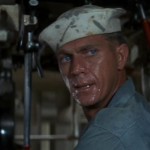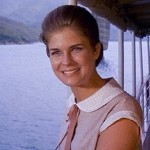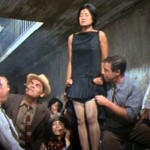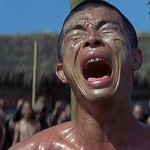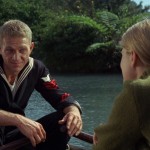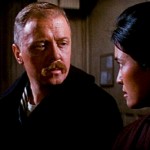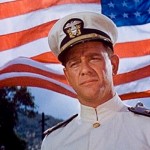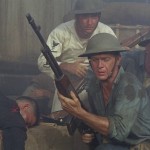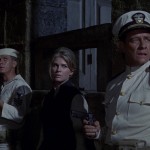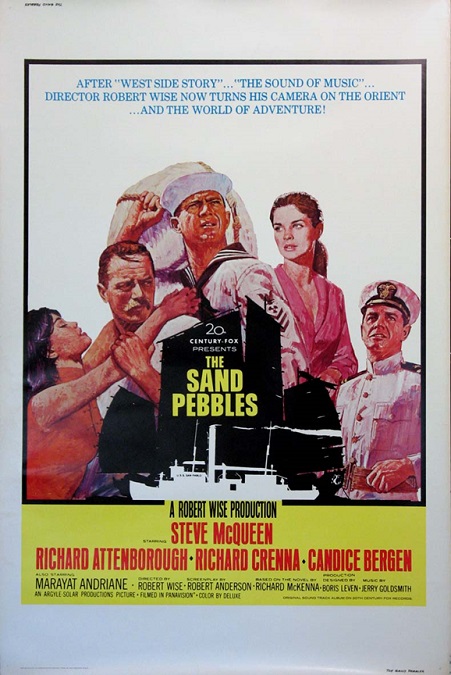
The Sand Pebbles – 1966
This was a very well-made film which, on the surface, appeared to be a war movie, except that it really wasn’t. The story took place in 1926 during the Chinese Revolution, but the revolution was not the focus of the plot. The focus was on the crew and captain of a U.S. Gunboat, the San Pablo. The film begins as a new Machinist’s Mate 1st Class, Jake Holman, is assigned to the vessel. He is wonderfully played by Steve McQueen.
Jake is a simple man who is generally good at following orders, unless they go against his conscience. The first half of the 3 hour movie follows him as he tries to learn his place as part of the San Pablo’s crew. Most of the ship’s duties are actually run by ‘coolies’ or local civilians, leaving the crew to easier tasks. But Jake wants to do his own work, run and maintain his own engines. This not only offends the Chinese laborers, but upsets the ship’s commanding officer, Lieutenant Collins, played by Richard Crenna.
One of my favorite members of the crew was Frenchy, played by Richard Attenborough, a sensitive young officer who befriends Jake, despite the fact that most of the men consider him to be a ‘Jonah.’ The sailors frequent a local bar that provides alcohol and prostitutes. Frenchy meets an educated Chinese girl named Maily, played by Marayat Andriane. Meanwhile, Jake meets an American missionary named Shirley Eckert, played by Candice Bergen. Love blooms on both fronts.
In the second half of the movie, the revolution begins and through a series of events, Frenchy marries Maily, who is killed by Chinese Nationalists after Frenchy dies of pneumonia. Jake is accused of the pregnant woman’s murder as an excuse to blockade the gunboat. After that, word of the Nanking Incident arrives and the San Pablo is ordered to return to the Yangtze River, an order which Lieutenant Collins disobeys so that he can save the missionaries still on Chinese soil, including Shirley. The final sequence is the ill-fated rescue attempt in which Collins and Jake are both killed.
The film’s plot was engaging and the characters were well fleshed out. I particularly liked both Jake and Frenchy. Both McQueen and Attenborough did a great job. The cinematography was, at times pretty spectacular, as the film was shot in Taiwan and Hong Kong. The atmosphere was exotic, and yet still grounded in an American feel, since most of the action took place on a U.S. vessel.
The music must also be mentioned as especially memorable. The powerful score, written by Jerry Goldsmith, was exciting and stirring, and really colored the entire film with a distinctly Chinese feel. Goldsmith, who is famous for writing numerous iconic and recognizable film and TV scores from 1954 to 2003, wrote an exciting score that really helped tell the story.
It is hard to find too much fault with the film. Director, Robert Wise did a great job with the pacing and the character development. The sets and costumes were spot on. The filming locations were marvelous and they even went so far as to build a working replica of a gunboat which was based on a Spanish Navy gunboat that had been seized by the U.S. Navy during the Spanish-American War of 1898.
Other actors in the film who did a good job were Jake’s coolie assistant and friend, Po-han, played by Mako. Simon Oakland played Machinist’s Mate Stawski. Sure, his character was an ass, but he played the part well. There was a boxing scene between Po-han and Stawksi that was a bit intense and cool to watch, even if it stretched believability a bit, its only saving grace being that they made the point of showing that Stawski was slightly drunk. Po-han should not have won. But this was such a minor infraction that it is hardly worth mentioning. The film was a good one and it was engaging enough that I didn’t feel the 3 hours it took to watch.
And just as a side note, I have to mention something that I am particularly happy about. 1966 seems to mark the official end of the black and white era. As I am looking at the movies that are coming up in the list of Academy Award nominees, most of them appear to be in glorious color!
